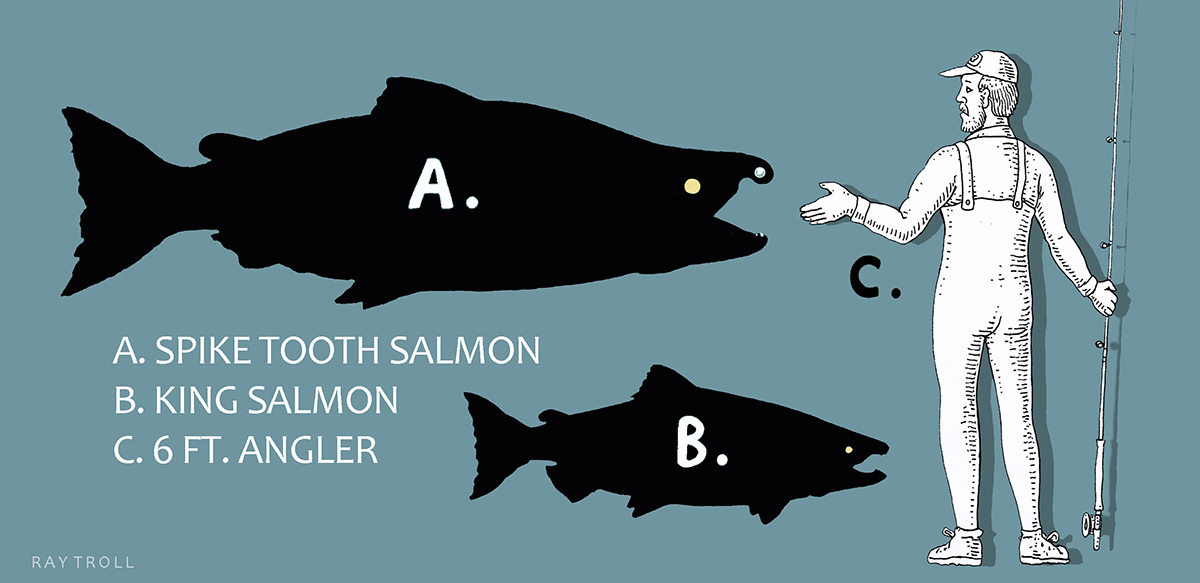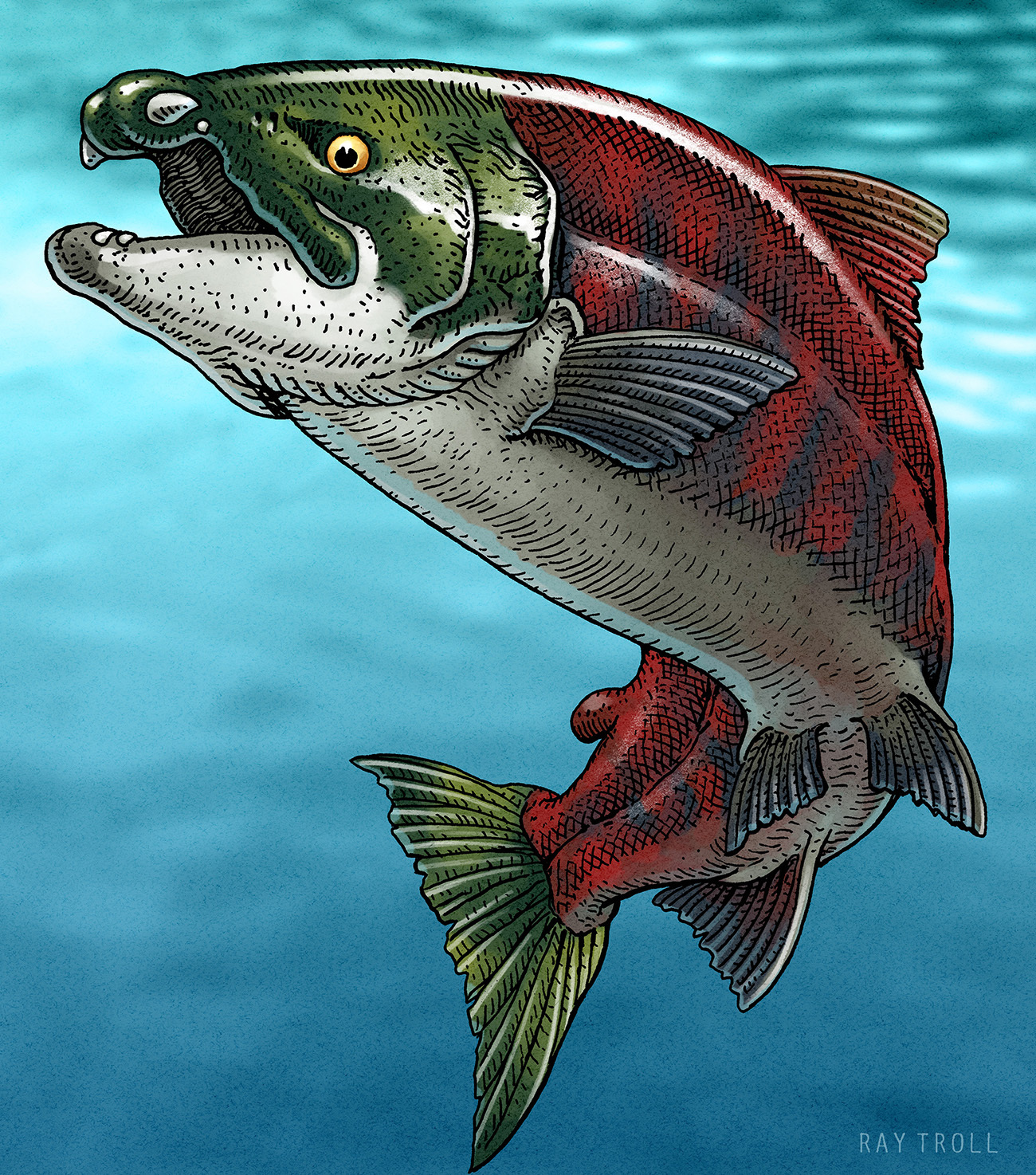About five million years ago, the North American Pacific Northwest was teeming with some pretty big fish that would have made the continent’s biggest salmon runs look small. An eight to 10-feet-long prehistoric salmon species called Oncorhynchus rastrosus stalked the seas and streams of the Miocene. It weighed upwards of 400 pounds and was almost twice as long and three times heavier than today’s largest salmon species–the Chinook/king salmon.
Oncorhynchus rastrosus also sported a formidable pair of front teeth that projected out from the sides of their mouths like tusks, but not like fangs as scientists previously believed. This major dental update is detailed in a study published April 24 in the open-access journal PLOS ONE.

Oncorhynchus rastrosus was first described in 1972. At the time, scientists believed that its large oversize teeth pointed backwards into the month like fangs. This largest known member of the Salmonidae family was commonly called the “saber-toothed salmon” due to the position of its teeth. However, CT scans of some newer Oncorhynchus rastrosus fossils and analysis in the study confirmed that these two-inch long curved chompers were more similar to a warthog’s tusks. This makes the species more of a “spike-toothed salmon.”
“This is all part of the scientific process. You have an idea and you get new information,” study co-author and University of Oregon paleobiologist Edward Davis tells PopSci. “It’s a good reminder of the humility you need to have as a scientist.”
[Related: A gator-faced fish shaped like a torpedo stalked rivers 360 million years ago.]
Scientists are not exactly sure what these signature tusks were used for, but believe they were primarily used to fight off other salmon or predators. They also may have been a way for female fish to dig nests for their eggs or even to help both sexes swim upstream to spawn.
“When they’re swimming upstream, they could maybe hook the spikes on something and take a rest without having to use any energy,” says Davis. “It’s sort of like if you’re holding on to the side of the swimming pool.”
With these tusks, they would have been as “equally fearsome” as their male counterparts, according to study co-author and professor and curator of fishes at Oregon State University Brian Sidlauskas.
Their teeth likely weren’t used for catching prey. The spike-toothed salmon may have been a filter-feeder that dined on tiny organisms called plankton. This filter feeding may have been one of the reasons they reached such titanic sizes. Their relatives the sockeye salmon as well as baleen whales and basking sharks have bony features called gill rakers that they use to filter out oxygen and microorganisms from the water. According to Davis, Oncorhynchus rastrosus have an unusually large number of gill rakers. Filter feeding with these gill takers possibly helped them grow since it could consume larger organisms like jellyfish and get more nutrients.

They also lived in an environment with the food and water resources that could support their large bodies. In this way, studying the spike-toothed salmon can also give clues about what might be in store for the planet as temperatures continue to rise. They lived at the end of the Miocene, when the world’s oceans were much warmer than today. Global carbon dioxide levels were also near what Earth could see in the year 2100. Like today’s salmon, they hatched in freshwater, went into the ocean, and then returned back into the freshwater to spawn and die.
“But these fish were huge,” says Davis. “That means there had to be a lot more water in those ancient rivers than we see today, to give them the space to be able to swim all the way up into eastern Oregon.”
[Related: The salmon of 2100 will have new habitat: the remains of melted glaciers.]
Oncorhynchus rastrosus went extinct as the Earth began to cool towards the end of the Miocene. This change in climate likely depleted them of the resources that they needed to sustain such large bodies.
In future studies, Davis and his colleagues plan to do a closer analysis of some
spike-toothed salmon specimens. While a complete skeleton has yet to be found, a number of fossils belonging to this enormous fish have been uncovered in recent years. They also hope to come up with new models to study how these tusk-like teeth were used and better understand what extinct ecosystems can teach us.
“Cool extinct animals get people excited about science and the ancient world. But it’s important to understand that ancient world because it gives us a window into what the world could be like in future scenarios,” says Davis. “By looking at how the giant salmon lived on this much warmer Earth, we can think about what resources are going to change over the next 80 years if our Earth is returning to that warmer state.”

